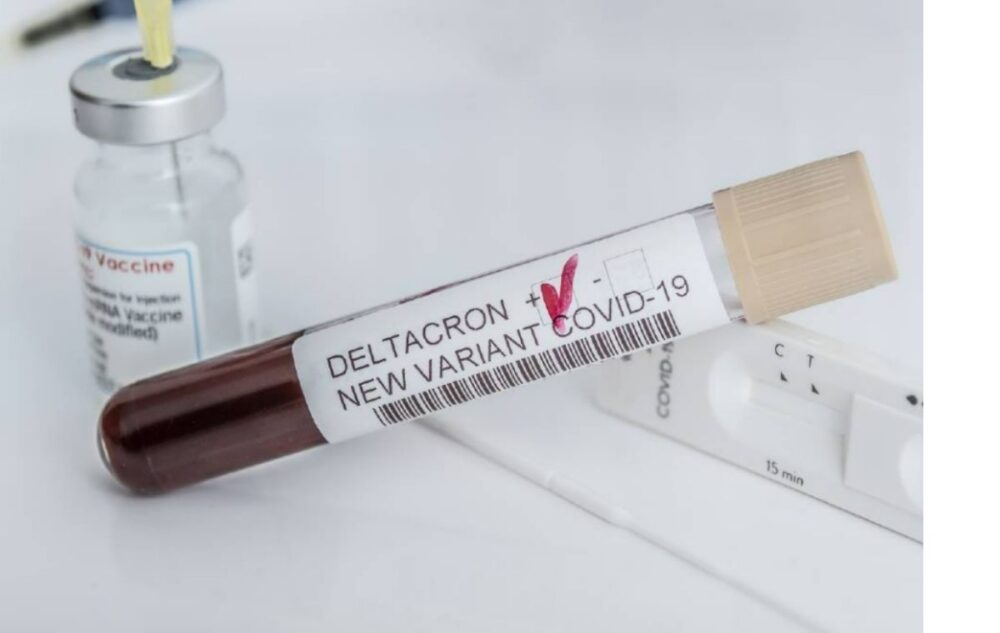As limitations are lifted and freedoms are restored in many nations, there is a widespread belief that the pandemic is finished. However, there is still a high risk of a harmful new variety emerging.
When omicron came, this happened, but we were fortunate. Omicron has proven to be more transmissible, although, in most nations where it is prominent, it hasn’t resulted in an increase in severe illness.
This, however, was not assured. Variants appear at random, and each one has the potential to be more hazardous than the last. Another has recently appeared and is currently known as deltacron. As you might expect, it’s a cross between delta and omicron, the two most recent prevalent forms.
Deltacron’s narrative begins in mid-February when researchers at the Institut Pasteur in Paris uploaded a coronavirus genomic sequence that differed significantly from earlier sequences. The viral sample came from an old guy in northern France and had an unusual appearance. The majority of its genetic sequence was identical to delta’s, which was dominant globally until late last year, but the component that encodes the virus’s spike protein – a vital element of its exterior shape that it needs to enter inside cells in the body – came from omicron, said author Luke O’Neill.
Three more hybrid genetic sequences were discovered in March, this time in the United States. There are currently more than 60 logged in France, the Netherlands, Denmark, the United States, and the United Kingdom.
Different deltacrons, on the other hand, may exist. The deltacron sequences recorded in the UK and US differ from those discovered in other nations, according to scientists at the Institut Pasteur. They’ve suggested that a number be added to these distinct types of deltacron.
How these hybrids formed
When two viruses infect the same cell, it’s not uncommon for them to mix and match bits of themselves. As it assembles copies of itself, one virus mixes bits of its genetic sequence with pieces from another related virus, a process known as “recombination.” During viral replication, it appears to happen at random.
When power is transferred from one viral variety to another – when one becomes less frequent and another becomes more so, meaning both are circulating in the population and there’s a possibility they’ll infect people at the same time – the likelihood of recombination increases. This was the circumstance when omicron overtook delta as the most dominant form on the planet.
Because the mixing of various genes might interfere with the virus’s capacity to build the proteins it needs to survive, recombination typically results in a new virus that isn’t viable. However, one can sometimes survive, and this appears to be the case with deltacron, Luke O’Neill said in a report of the Conversation.
Indeed, because the deltacron hybrids seen in the United States and the United Kingdom appear to be distinct from those found in continental Europe, it’s plausible that this has occurred several times.
A chip off the old block?
At the time, it’s difficult to determine how deltacron will differ from its parents. The viruses delta and omicron are quite distinct. They differ in their methods of infecting cells and evading immunity. We still don’t know enough about deltacron to say how different it will be from any of them.
Deltacron is likely to spread because it has been discovered in several surrounding nations. However, because omicron is still spreading across Europe, it’s the variety we should be keeping an eye on right now.
Deltacron will have to wait and see if it can displace omicron, as well as whether it is any better at avoiding immunity and causing more severe sickness. There are currently insufficient deltacron examples to draw any conclusions. Experiments to identify the qualities of deltacron are required; scientists have begun this process and have been able to infect cells with it, so we should have answers soon.
Meanwhile, we must keep a close check on it. The fact that deltacron is likely to have spread across borders emphasizes the importance of continued genomic monitoring to track how the virus evolves and moves. More varieties are anticipated to evolve if the coronavirus continues to spread and infect large numbers of individuals, including through recombination.
We may be quite certain, however, that past infection with other forms, as well as immunization, will provide some protection against severe illness if deltacron becomes dominant. Vaccines based on the original Wuhan strain of the virus have been shown to protect against severe illness in more current versions. Time will tell if delta and omicron have given birth to wild offspring for us to be concerned about the discussion.





































